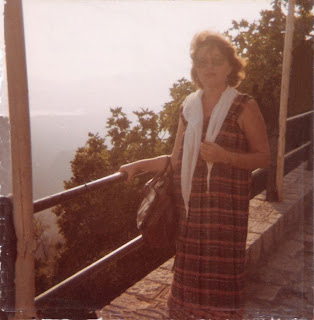On the day of my visiting the above mentioned sites, I stopped at an outside cafe for a cup of coffee and a slice of cake. While sipping my coffee and enjoying the scenery, two women approached the place looking for a table. The younger woman had no eyes, no orbits. It was a tough sight. All the heads turned in her direction. She could not see the looks , but I was sure she felt them, and she was aware of the fact that in her condition ( and not wearing black sunglasses as she didn't have earflaps either) wherever she goes she immediately becomes an "attraction" .
Two things came to my mind: one that she was probably a victim of the Thalidomide drug for morning sickness , prescribed to pregnant women in the sixties. This drug caused women to give birth to babies with missing limbs and/or various deformities. The other thing was , that ironically, the whole scene at the cafe 'went well' with the fado singing that could be heard in the vicinity ( 'fado'- portuguese sad, soul-tortured songs that could move the audience to tears. The famous portuguese singer Amalia Rodriguez was the most outstanding representative of this music genre).
And then , a third thing crossed my mind : that it is in moments like these that we don't want to resemble movie stars and models; we just want to be ourselves, simple, plain looking people, and with intact organs . It is in moments like these that we thank God for what we have and ask Him to take care and protect those less fortunate people, like the young eyless woman who was sitting at the cafe table in the Belem quarter of Lisbon.
Tower of Belem- facing the river
The balcony of the tower

Monastery of Jeronimo





















































